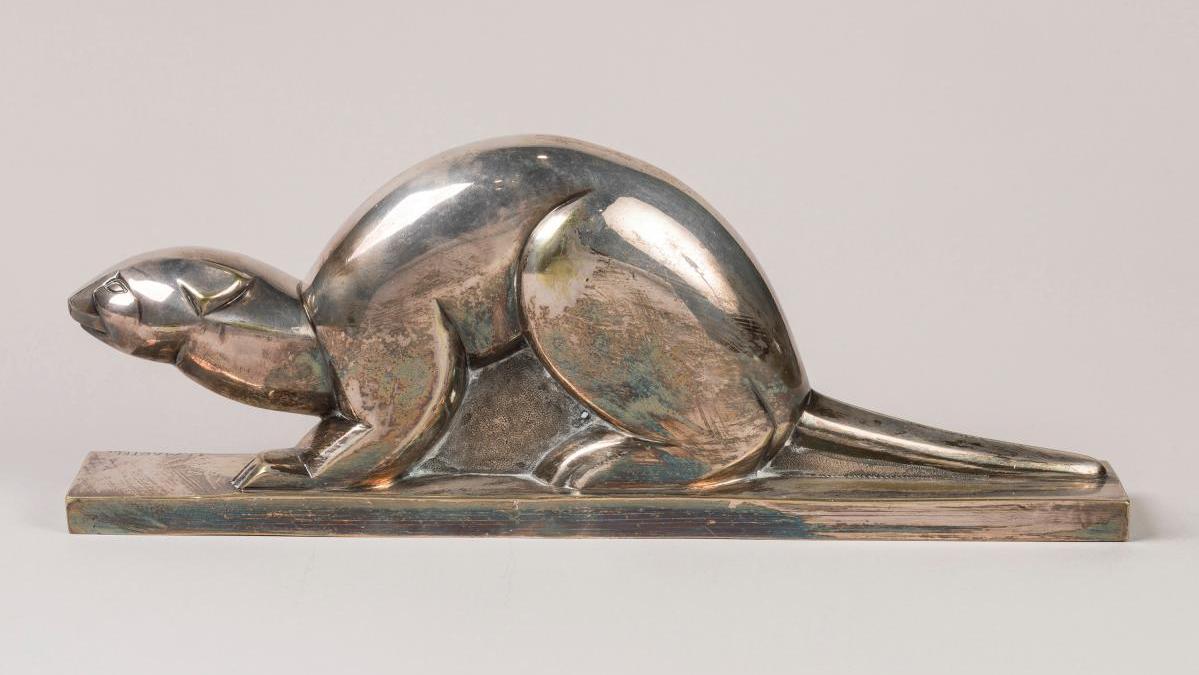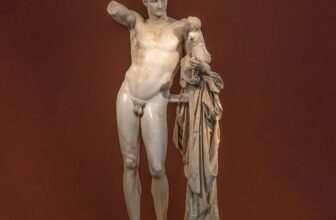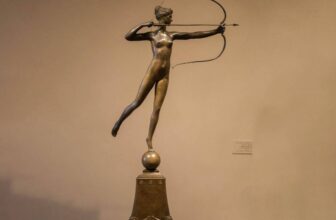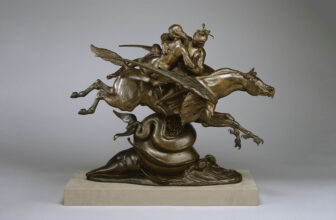
Most Famous Art Deco Sculptures by Jan and Joel Martel
In the early 20th century, when the winds of modernity swept across Europe, two French twin brothers, Jan and Joel Martel, emerged as visionaries of the Art Deco movement. Their work, deeply rooted in geometry, abstraction, and stylized natural forms, not only captured the essence of Art Deco but also helped shape it. Celebrated for their symmetrical thinking, imaginative concepts, and architectural collaborations, the Martel twins were trailblazers whose sculptures bridged tradition and innovation in one of the most exciting artistic periods of the modern era.
This is a deep dive into the story of Jan and Joel Martel: their rise to prominence, their most famous works, their artistic processes, the value of their sculptures today, and where one can find these striking pieces of Art Deco history.
Who Were Jan and Joel Martel?
Born in Nantes, France in 1896, Jan and Joel Martel were identical twins who lived and worked in close collaboration throughout their lives. They studied at the École des Beaux-Arts in Paris, where they immersed themselves in classical techniques but soon began forging their own path. Their shared studio was a hive of innovation, one mind seemingly split into two bodies, working in unison to craft some of the most forward-thinking sculptures of their time.
From early in their careers, they aligned themselves with the avant-garde, joining artistic circles that included the Union des Artistes Modernes (UAM), a group that sought to redefine art and design through the lens of modernism. The twins operated as a singular creative unit, co-signing their works and seamlessly blending their individual talents into a cohesive vision.
What Is Jan and Joel Martel Known For?
The Martel twins are most known for their contributions to Art Deco sculpture, which is characterized by stylized forms, symmetrical geometry, and a blend of decorative and functional aesthetics. Their signature style reflected the tenets of Art Deco, streamlined, elegant, and often abstract, but with a unique surrealist twist and a love for experimenting with materials.
Their works spanned several categories, including:
Architectural sculptures
Public monuments
Decorative art
Furniture and lighting design
Garden sculptures and fountains
They were deeply invested in integrated design, often collaborating with architects, interior designers, and urban planners to ensure their works fit harmoniously into larger spatial contexts.
Most Famous Art Deco Sculptures by Jan and Joel Martel
1. The Monument to Claude Debussy (1932)
Perhaps their most celebrated work, this monument was created to honor the composer Claude Debussy. Instead of a literal depiction, the twins chose a symbolic abstraction, a modern column decorated with surreal motifs, referencing Debussy’s ethereal and dreamlike musical compositions.
The structure incorporates flowing lines, geometric abstraction, and musical references. It reflects the Martel twins’ innovative approach to memorial sculpture, eschewing classical busts in favor of a poetic architectural sculpture.
2. Concrete Tree Sculptures (1925)
Commissioned for the Exposition Internationale des Arts Décoratifs et Industriels Modernes in Paris, the fair that gave Art Deco its name, the Martel brothers created a set of concrete trees for the garden of architect Robert Mallet-Stevens. These stylized trees, carved in solid concrete, stood as an architectural fantasy that fused natural forms with the industrial precision of the machine age.
These trees were revolutionary not only for their abstraction but also for the material choice, concrete was still relatively unconventional for sculpture at the time. The trees became symbols of the Art Deco spirit: blending nature, geometry, and modern materials.
3. Fountains and Garden Sculptures
Jan and Joel Martel designed several remarkable fountains and decorative garden pieces during their careers. Their fountain in the garden of Villa Noailles in Hyères, designed in collaboration with Mallet-Stevens, is particularly notable. The sleek lines, symmetry, and integration with the landscape exemplify their approach to functional yet artistic forms.
4. “Les Singes” (The Monkeys)
This whimsical yet abstract sculpture showcases a group of monkeys, reduced to simplified, geometric forms. The piece displays their flair for stylization and their ability to transform organic subjects into sculptural rhythm and harmony. This sculpture also highlighted their talent in animalier art, a genre dedicated to animal subjects, within the Art Deco framework.
How Did Jan and Joel Martel Make Their Art Deco Sculptures?
Material Innovation
One of the distinguishing features of the Martel twins’ work was their innovative use of materials. While traditional sculptors worked in bronze or marble, the Martels were pioneers in using concrete, plaster, stone, aluminum, and terracotta. Concrete, in particular, became a defining material in their portfolio.
The choice of concrete was both aesthetic and ideological. It aligned with the modernist ethos of embracing industrial materials and creating works that could be replicated or mass-produced. Their concrete trees at the 1925 Expo are often cited as the first successful examples of decorative concrete sculpture on a large scale.
Collaborative Process
Their process was always collaborative, not just with each other but often with other creatives. They worked closely with leading architects of their time, including Robert Mallet-Stevens, Le Corbusier, and Pierre Chareau. These collaborations ensured that their sculptures were not standalone objects but part of a broader architectural vision.
Sculpting Style
Their sculptures were typically created through a multi-step process:
Concept sketches , often abstract, geometric interpretations of the subject.
Clay or plaster maquettes , small-scale models to refine the form.
Casting or carving , depending on the final material, they would either cast the piece in a mold (for concrete or metal) or carve it directly (in the case of stone or wood).
Surface detailing , despite the abstract nature of their work, the Martels paid meticulous attention to texture and surface patterns, using tools to engrave or etch subtle detailing.
Their aesthetic emphasized harmony, rhythm, and abstraction, avoiding the excess ornamentation of Art Nouveau while maintaining a lyrical quality in their forms.
Where Are Jan and Joel Martel’s Art Deco Sculptures Located Today?
Today, their works can be found across France and in international private collections and museums. Notable locations include:
Musée d’Art Moderne de Paris – Home to several of their original works and maquettes.
Villa Noailles in Hyères – A masterpiece of modernist architecture that features their fountains and garden sculptures.
Cité de l’Architecture et du Patrimoine, Paris – Exhibits architectural models and integrated sculpture works by the Martel twins.
Private Gardens and Architectural Sites – Some of their commissioned garden sculptures and monuments remain in situ at various French estates and modernist buildings.
Musée des Années 30 (Boulogne-Billancourt) – Contains period Art Deco artworks, including some of the Martels’ contributions.
Public Spaces in Paris – Their Debussy monument and other public works still stand as part of the city’s artistic landscape.
Because many of their sculptures were created as architectural features or garden ornaments, some remain hidden in private estates, and their full body of work continues to be rediscovered and reassessed.
How Much Are Jan and Joel Martel’s Art Deco Sculptures Worth Today?
The value of Martel sculptures has risen significantly over the years, reflecting the renewed interest in Art Deco and mid-century design.
Auction Results and Market Trends
Small terracotta and plaster pieces: These typically fetch anywhere from €10,000 to €30,000, depending on rarity and condition.
Bronze or aluminum sculptures: These pieces, especially if signed and limited edition, can reach €50,000 to €100,000 or more.
Large architectural pieces or rare monumental works: These are rarely available on the open market, but when they appear, they can command several hundred thousand euros, especially if connected to historically significant sites or exhibitions.
Some of their works have also been sold at top auction houses, and when included in curated Art Deco sales, they draw attention from collectors, museums, and decorators worldwide.
Additionally, the growing market for early 20th-century design has led to an increase in replica commissions and scholarly exhibitions, further boosting the value and visibility of their work.
Legacy of Jan and Joel Martel
The Martel brothers stand as paragons of a moment in art history when the boundaries between sculpture, design, and architecture blurred. Their ability to innovate with materials, challenge conventions, and align with the spirit of modernity secured them a lasting legacy in the Art Deco movement.
Today, they are remembered not only for their iconic concrete trees or the Debussy monument but also for a philosophy of art that embraced functionality, geometry, and harmony with the built environment. Their collaborative nature, working as a duo and with other visionaries of their time, meant that their influence reached beyond the realm of sculpture into architecture, landscape design, and industrial art.
As Art Deco continues to captivate collectors and historians, the work of Jan and Joel Martel remains a powerful testament to the elegance, innovation, and symmetry of a transformative artistic age.
Jan and Joel Martel were twin sculptors who were central figures in the Art Deco movement.
Their most famous works include the Claude Debussy monument and the concrete tree sculptures from the 1925 Paris Expo.
They were known for their use of modern materials (especially concrete) and their collaboration with architects.
Their sculptures are located across French museums, gardens, and architectural landmarks.
The value of their artworks continues to rise, with some pieces worth over €100,000.
Their legacy is deeply intertwined with the birth of modernism and the elegance of Art Deco design.
Their art was not just about forms, it was about vision, unity, and a twin-powered commitment to reimagining the world through the language of sculpture. image/ gazette-drouot




